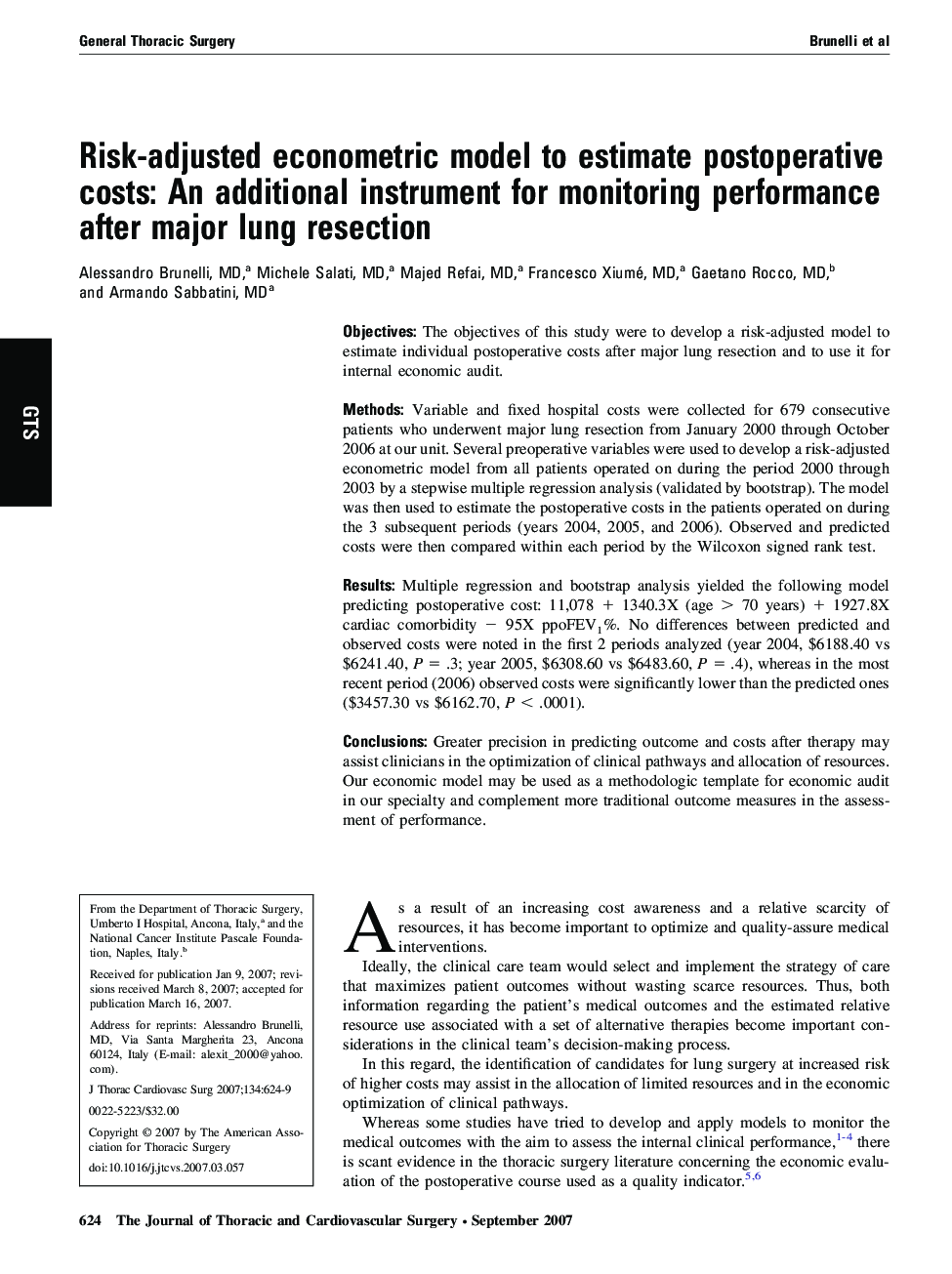| Article ID | Journal | Published Year | Pages | File Type |
|---|---|---|---|---|
| 2985647 | The Journal of Thoracic and Cardiovascular Surgery | 2007 | 6 Pages |
ObjectivesThe objectives of this study were to develop a risk-adjusted model to estimate individual postoperative costs after major lung resection and to use it for internal economic audit.MethodsVariable and fixed hospital costs were collected for 679 consecutive patients who underwent major lung resection from January 2000 through October 2006 at our unit. Several preoperative variables were used to develop a risk-adjusted econometric model from all patients operated on during the period 2000 through 2003 by a stepwise multiple regression analysis (validated by bootstrap). The model was then used to estimate the postoperative costs in the patients operated on during the 3 subsequent periods (years 2004, 2005, and 2006). Observed and predicted costs were then compared within each period by the Wilcoxon signed rank test.ResultsMultiple regression and bootstrap analysis yielded the following model predicting postoperative cost: 11,078 + 1340.3X (age > 70 years) + 1927.8X cardiac comorbidity − 95X ppoFEV1%. No differences between predicted and observed costs were noted in the first 2 periods analyzed (year 2004, $6188.40 vs $6241.40, P = .3; year 2005, $6308.60 vs $6483.60, P = .4), whereas in the most recent period (2006) observed costs were significantly lower than the predicted ones ($3457.30 vs $6162.70, P < .0001).ConclusionsGreater precision in predicting outcome and costs after therapy may assist clinicians in the optimization of clinical pathways and allocation of resources. Our economic model may be used as a methodologic template for economic audit in our specialty and complement more traditional outcome measures in the assessment of performance.
